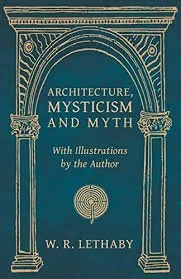 Image 1 of 1
Image 1 of 1


ARCHITECTURE, MYSTICISM AND MYTH (1892).PDF
By W.R. Lethaby
Behind every style of architecture there is an earlier style, in which the germ of every form is to be found; except such alterations as may be traced to new conditions, or directly innovating thought in religion, all is the slow change of growth, and it is almost impossible to point to the time of invention of any custom or feature. It will be necessary, not only to examine architecture in the monuments, but the contemporary statements which relate to them, the stories about buildings, and even the mythology of architecture, for such a mythology there is. If we trace the artistic forms of things to their origin, we find a direct imitation of nature. The thought behind a ship is the imitation of a fish. Tables and chairs, like the beasts, are quadrupeds; the lion’s leg and foot of modern furniture come to us from the Greeks, & earlier. There is ample evidence that sacred ceremony, the state that surrounded a throne, and the pageant of war, all had reference to the ritual and pomp of nature; so that man might be one with her and share her invincible strength.
By W.R. Lethaby
Behind every style of architecture there is an earlier style, in which the germ of every form is to be found; except such alterations as may be traced to new conditions, or directly innovating thought in religion, all is the slow change of growth, and it is almost impossible to point to the time of invention of any custom or feature. It will be necessary, not only to examine architecture in the monuments, but the contemporary statements which relate to them, the stories about buildings, and even the mythology of architecture, for such a mythology there is. If we trace the artistic forms of things to their origin, we find a direct imitation of nature. The thought behind a ship is the imitation of a fish. Tables and chairs, like the beasts, are quadrupeds; the lion’s leg and foot of modern furniture come to us from the Greeks, & earlier. There is ample evidence that sacred ceremony, the state that surrounded a throne, and the pageant of war, all had reference to the ritual and pomp of nature; so that man might be one with her and share her invincible strength.